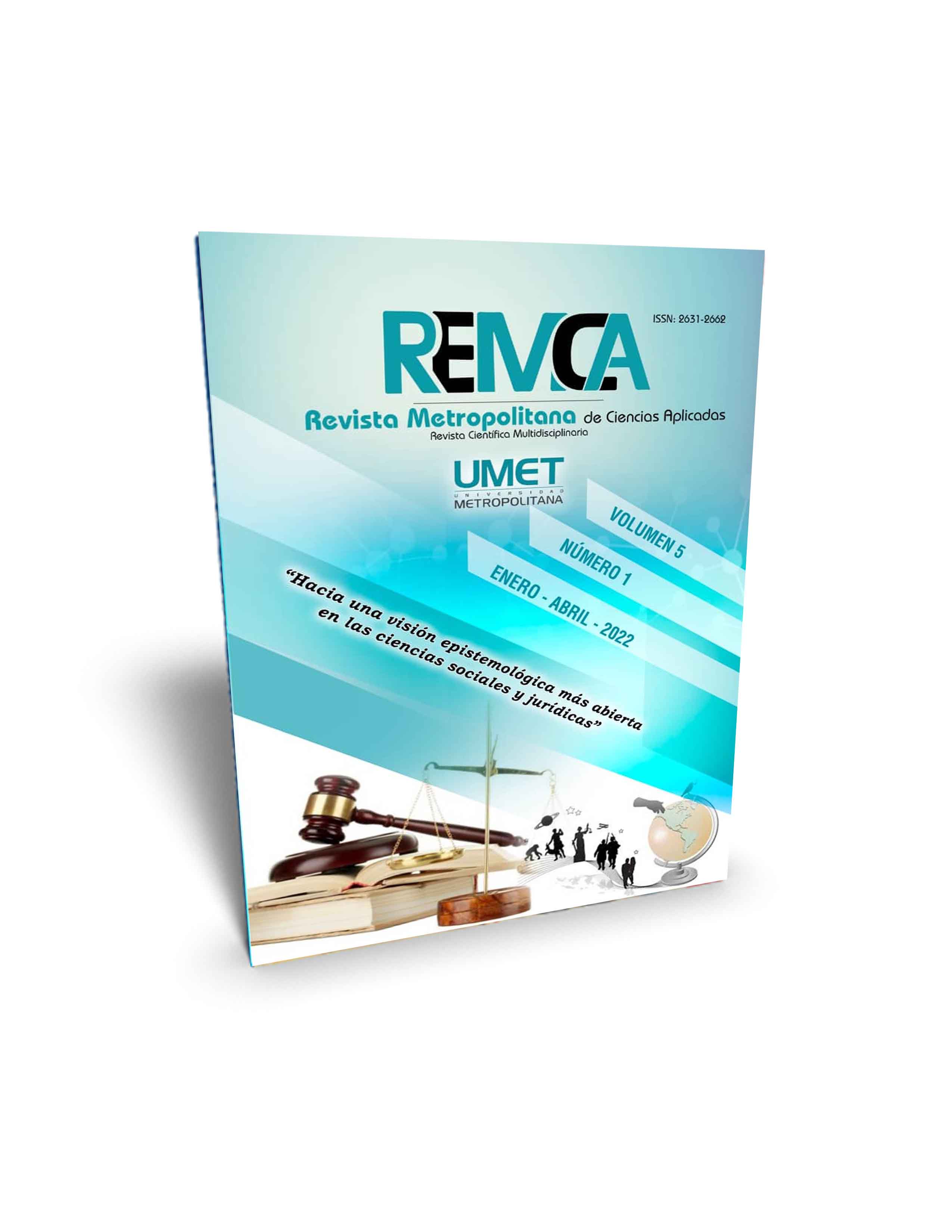Analysis of the judicial process followed by women victims of violence in Ecuador
DOI:
https://doi.org/10.62452/jvypng77Keywords:
Violence, crimes of violence, judicial processAbstract
Women from the beginning of humanity have traveled a path full of obstacles, to transcend their pre-established role and gender stereotype and they continue to do so today through small and large demonstrations such as: marches, manifestos, education, etc. The problematization of this work stems from the last report of 2015-2016 on the matrix of indicators of progress in the implementation of the Inter-American Convention to prevent, punish and eradicate violence against women "Convention of Belém do Pará", which indicates that the 33.7% of the admitted cases were acquitted and 18.48% of the cases were archived, where there was withdrawal (in case of contravention) or dismissal was declared, due to atypicality and non-existence of elements in crimes of violence. The methodology used is: the logical historical method, the documentary analysis and the legal exegesis of national norms. The objective is: to identify and analyze the causes for which women victims of violence do not conclude with the judicial process in Ecuador, through the bibliography and national and international regulations, to understand the psychological and emotional effects or consequences that these produce in the person.
Downloads
References
Alencar, R., & Cantera, L. (2012). Violencia de Género en la Pareja: Una Revisión Teórica. PSICO, 43(1), 116-126.
Asociación Latinoamericana para el Desarrollo Alternativo. (2020). Feminicidios en el Ecuador - 1 de enero al 16 de noviembre de 2020. http://www.fundacionaldea.org/noticias-aldea/e44274nd34j379ypj4nersafha952d
Campaña, A. (2018). Estándar de prueba en el delito de violación sexual: la declaración del único testigo víctima . (Tesis de Grado). Universidad San Francisco de Quito.
Cantera, L. (2007). Casais e violência: Um enfoque além do gênero. Dom Quixote.
Ecuador. Asamblea Nacional Constituyente. (2008). Constitución de la República del Ecuador. Registro Oficial 449. https://www.ambiente.gob.ec/wp-content/uploads/downloads/2018/09/Constitucion-de-la-Republica-del-Ecuador.pdf
Ecuador. Asamblea Nacional. (2014). Código Órganico Integral Penal. Registro Oficial Suplemento 180. https://tbinternet.ohchr.org/Treaties/CEDAW/Shared%20Documents/ECU/INT_CEDAW_ARL_ECU_18950_S.pdf
Ecuador. Asamblea Nacional. (2018). Ley Órganica Integral para Prevenir y Erradicar la Violencia contra las Mujeres. Registro Oficial Suplemento 175. https://www.igualdad.gob.ec/wpcontent/uploads/downloads/2018/05/ley_prevenir_y_erradicar_violencia_mujeres.pdf
Ecuador. Dirección Nacional de Estudios Jurimétrico y Estadística Judicial. (2020). Reporte en materia de Violencia. Consejo de la Judicatura.
Ecuador. Dirección Nacional de Innovación, Desarrollo y Mejoras Continuas del Servicio Judicial. (2014). Modelo de Gestión para las Unidades Judiciales de Primer Nivel . Resolución 003-2014. https://www.funcionjudicial.gob.ec/www/pdf/resoluciones/2014cj/003-2014.pdf
Ecuador. Instituto Nacional de Estadísticas y Censos. (2019). Encuesta Nacional sobre Relaciones Familiares y Violencia de Género contra las Mujeres (ENVIGMU). Boletin Técnico. https://www.ecuadorencifras.gob.ec/violencia-de-genero/
Expósito, F. (2011). Violencia de género . Mente y Cerebro, 48, 20-25.
Falacio, A., & Fries, L. (2005). Feminismo, género y patriarcado. Revista sobre enseñanza del Derecho de Buenos Aires, 3(6), 259-294.
Hernández, F. (2017). Retractación y desistimiento en las mujeres víctimas de violencia intrafamiliar en Chile . (Tesis de Grado). Universidad de Chile.
Hirigoyen, M. (2006). Mujeres Maltratadas. Los mecanismos de la violencia en la pareja. Paidos.
Mantilla, S. (2015). La Revictimización como causal de silencio de la víctima. Revista de Ciencias Forenses de Honduras, 1(2), 3-12.
Morales, S. (2021). Sociedad.- Las niñas atacadas de Puerto Quito. Las niñas atacadas de Puerto Quito. https://www.planv.com.ec/historias/sociedad/ninas-atacadas-puerto-quito
Office on Women's Health. (2021). Efectos de la violencia contra la mujer. https://espanol.womenshealth.gov/relationships-and-safety/effects-violence-against-women
Organización de las Naciones Unidas. (1993). Declaración sobre la eliminación de la violencia contra la mujer. Resolución 48/104. ONU. https://www.ohchr.org/sp/professionalinterest/pages/violenceagainstwomen.aspx
Walker, L. (2016). The Battered Woman Syndrome. Springer Publishing Company.
Zavala, J. (2004). Tratado de Derecho Procesal Penal, Tomo III. Edino.
Downloads
Published
Issue
Section
License
Copyright (c) 2022 Clara Daniela Romero Romero, Libertad Machado López, Nadia Soliman Franco (Autor/a)

This work is licensed under a Creative Commons Attribution-NonCommercial-ShareAlike 4.0 International License.
Authors who publish in Revista Metropolitana de Ciencias Aplicadas (REMCA), agree to the following terms:
1. Copyright
Authors retain unrestricted copyright to their work. Authors grant the journal the right of first publication. To this end, they assign the journal non-exclusive exploitation rights (reproduction, distribution, public communication, and transformation). Authors may enter into additional agreements for the non-exclusive distribution of the version of the work published in the journal, provided that acknowledgment of its initial publication in this journal is given.
© The authors.
2. License
The articles are published in the journal under the Creative Commons Attribution-NonCommercial-ShareAlike 4.0 International License (CC BY-NC-SA 4.0). The terms can be found at: https://creativecommons.org/licenses/by-nc-sa/4.0/deed.en
This license allows:
- Sharing: Copying and redistributing the material in any medium or format.
- Adapting: Remixing, transforming, and building upon the material.
Under the following terms:
- Attribution: You must give appropriate credit, provide a link to the license, and indicate if any changes were made. You may do this in any reasonable manner, but not in any way that suggests the licensor endorses or sponsors your use.
- NonCommercial: You may not use the material for commercial purposes.
- ShareAlike: If you remix, transform, or build upon the material, you must distribute your creation under the same license as the original work.
There are no additional restrictions. You may not apply legal terms or technological measures that legally restrict others from doing anything the license permits.




